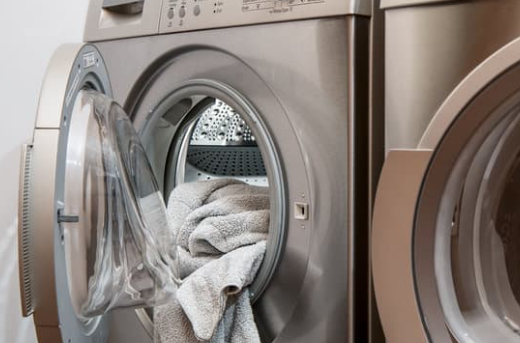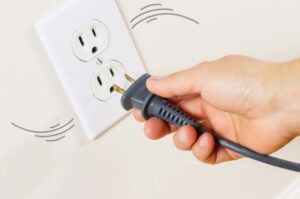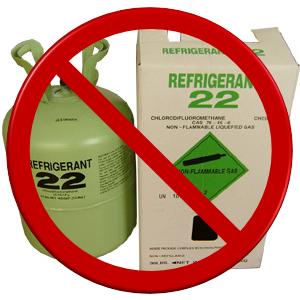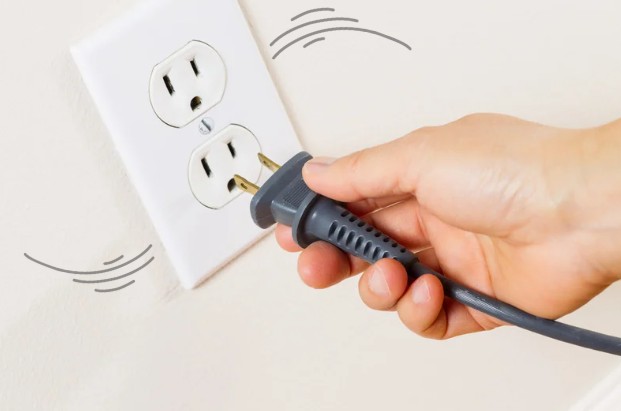
Your washing machine is one of the hardest working appliances in your home.
This article and video gives you 55 tips for your washing machine, that can help you to:
- reduce energy
- improve performance
- extend service life
- improve safety.
WASHING MACHINE OPERATING TIPS
1. Always use cold water for the rinse cycle. Using warm or hot water for the rinse cycle has very little effect on the cleaning of your clothes and is basically a waste of money.
2. Use warm or cold water for the wash cycle instead of hot (except for greasy stains). Experiment with different laundry detergents to find one that works well with cooler water (helpful accessory: washing machine cleaners). Pre-soaking heavily soiled clothes can allow you to use cooler wash temperatures for your washer.
3. 90 percent of the energy needed to wash clothes is used for heating the water, so use as cool of water as you can. For an average household, running your washing machine with a hot wash / cold rinse setting will cost about $100 – $125 a year, versus only about $10 a year for using a cold wash / cold rinse setting.
4. If you suspect that you have bedbugs, then wash and dry at the highest settings. You should wash your bed linen and any affected items in hot water, and dry them on the highest dryer setting.
5. If you find a “warm wash / cold rinse” isn’t getting your clothes clean enough, try a warm water pre-soak before washing. Soaking clothes in warm water before a wash should clean the clothes just as well, if not better than a hot water wash without soaking.
6. Remember that your cold water temperature can vary from season to season as the temperature of the underground piping changes, so you may need to adjust your use of detergents accordingly.
7. Run the washing machine only when there is a full load. Washing one large load is more economical than washing two small loads. If your washer has the option to select variable load sizes and you don’t have a full load, set it to the appropriate load size and this will use less water and save energy.
8. Do not over-wash clothes. Clothes that need just a light cleaning don’t need to be washed for as long as dirty clothes, and don’t need as much detergent.
9. Use your washer’s sud-saver option for multiple loads, to re-use wash water when you have several loads to wash, one right after another.
10. Use the proper setting for the type of clothes being washed. If they are delicate or knits, use a lighter setting rather than the “regular” setting. This will use less energy and help your clothes to last longer.
11. Be careful not to overload your washer, as this can damage your motor (or agitator for top load models with an agitator).
12. Install noise reducing pads, such as “Silent Feet,” under your washing machine to reduce noise and vibration from your washer (helpful accessory: silent Feet).
13. Ensure that your washer is level from left to right, and back and forth. Un-level washers make more noise and vibrations, and can cause damage to the washer components and adjacent walls.
14. Get a front-loading washing machine. They use significantly less water, which also saves energy and money when you wash with warm or hot water.
15. If you use a front-loading washing machine, then you will want to use a low-suds”HE” (high efficiency) detergent, otherwise, you can have problems with excess suds.In A front-loader, excess suds will reduce its washing performance as the air bubbles separate the clothes from the detergent (see types, costs, and reviews of high-efficiency detergents).
16. Front-loading washers seem to work better using a hot or warm wash temperature.
17. If you have a front-loading washer, do not allow dirt or grime to build up around the door, or the rubber boot where the clothes are inserted.
18. If your front load washer seems to have a musty smell and the walls of the washer drum are greasy, it can be caused by using too much laundry detergent. Some Detergents contain animal oil which can cling to the walls of the washer drum.You Can clean this residue by scrubbing with a paste made from baking soda and water, then running an empty load on a hot wash setting.
19. To help prevent a smelly washer, do not leave wet clothes in your washer overnight.
20. To prevent a smelly washer leave the door open for at least 15 minutes after using the washer to allow the interior to dry, especially if you have a front loader. However, if there are small children in your home, then wipe the interior dry when finished washing and lock the door.
21. If you have a smelly washer use white vinegar or baking soda. You can often remove the odors by running your washer empty on its hot water cycle, and then pausing the wash cycle and adding either a cup of white vinegar or baking soda (see types, costs, and reviews of baking soda).
22. Routinely clean the inside of your washer, fabric softener receptacle, bleach dispenser, and the top rim of the wash bucket (or the door seals for front loaders).
23. To keep your washer looking like new, clean and polish the outside of your washer, and you can use an appliance polisher to remove scratches and stains.
24. If your washer drains slowly, the drain pump filter and hose may have become clogged by lime deposits or by collected dirt sediments. To clear, you can try running an empty hot water cycle and adding 2 cups of white vinegar during the wash cycle, then run an empty cold water cycle to remove any remaining vinegar smell.
25. If your washer still has rubber water supply hoses, you should consider replacing them with high-quality, reinforced stainless-steel braided hoses (see types, costs, and reviews of stainless braided hoses).
26. You should replace your washer’s water supply hoses every 5 years,to prevent unexpected leaks and major flooding, even if there are no apparent signs of deterioration from the outside.
27. Frequently inspect your water supply hoses for blisters in the hose, worn tubing, stress cracks or a loose connection. replace the supply hose if it shows any sign of wear. The most common site of failure is near the connection where the hose bends.Tighten The connection if it feels loose.
28. Make sure your washing machine is at least 4 inches from the wall to prevent the hoses from bending and kinking. Some hoses have pre-formed metal elbows to help prevent kinking.
29. If your washer is filling up slowly, then the filter screens in the water supply hoses may have become plugged with scale and sediment, and need to be cleaned with white vinegar and scrubbing with a soft bristle brush.
30. Turn off the hot and cold water supply valves when the machine is not in use, especially if you will be away for several days.
31. Install a dual ball valve lever-operated water shut-off valve for your water supply hoses, which turns off both the hot and cold water supply with a single lever.
32. Clean out your washer’s lint filter at least 4 times a year. Most Maytag washers collect lint in the center tube of the agitator, while other models can have their lint filters near the top of the tub, which you need to slide out, clean off, and re-insert.
33. Be sure to use the energy-saving settings on your washer. For example, a faster spin in the washer will reduce how long the clothes will need to be in the dryer.
34. Replacing a 10-year-old washer with a new, ENERGY STAR-qualified model can save up to $135 each year on your utility bills.
35. Avoid buying new clothes that require separate washings.
36. Save hand washing jobs and do them all together, using the same sudsy water for several items, and rinsing them all together.
37. Place all delicate clothes into net bags to protect them. This will help keep them from being caught on other clothes during the washing cycle which could potentially ruin them (helpful accessory: laundry bags).
38. Pre-treat clothes that have stains that will be difficult to get out. This will help ensure you don’t have to wash the clothing multiple times to get the dirt or stains out.
39. Pre-soak (or use a soak cycle if your washing machine has one) when washing clothes that are heavily soiled. This will ensure that you don’t have to wash the same clothes twice.
40. Locate your washing machine as close to the hot water tank as possible. The shorter distance, the less amount of heat loss in the pipes.
41. Insulate any exposed pipes from the hot water heater to the washing machine.
42. Before taking out the wash, set the washer to do another spin cycle.This will get more water out of the clothes meaning they will not take as long to dry in the dryer.
43. If you live in a condo, duplex or apartment, be courteous of your neighbors. They may be able to hear your washing machine through the floor or wall when it’s running, so you may not want to do laundry late at night nor very early in the morning.
44. Make sure that your washing machine is not plugged into an extension cord. It should only be plugged into an outlet that is meant for a large appliance and can handle the energy load.
45. Operate your washing machine only when someone is at home.don’tleave your apartment while the washer is running. If it overflows or malfunctions, you need to be there to take care of the situation.
46. Place a leak detector alarm on the floor near your washer, or use a model with a probe that can sit inside of the water-catch pan under your washer (see costs and reviews of leak detector alarms).
47. Very large comforters, blankets, and rugs can potentially damage your washing machine. You may want to consider taking these items to a laundromat where they have oversize washers available.
48. Never use more detergent than what’s recommended on the detergent bottle, and you should even experiment to see if you can get your clothes clean with using just a fraction of the recommended amount of washing detergent.
49. If your washing machine begins operating unusually (leaking, making strange noises, etc.), Have a professional repair the appliance as soon as possible to avoid risks of floods, electrocutions, or of a small mechanical problem becoming a more expensive one.
50. Watch children and pets around your washing machine. Make sure that the door(especially if it is front-loading) is kept closed. Keep the door to the laundry room securely closed or you may even want to consider keeping it locked.
51. Teach children about washing machine safety to help prevent accidents.
52. Always sort your laundry for washing. Separate whites, colored fabrics, synthetics, delicates, and woolens.
53. Be sure to zip up zippers, close any hooks or fasteners, tie up any loose cords, etc. Before putting clothes into your washer. And make sure that no metal objects are left in your laundry (e.g Hair clips, safety pins, pins).
54. To save water and energy, consider wearing your clothes extra times before washing them.
55. And finally, if your electricity provider has lower off-peak rates, then run your washer during off-peak periods, when it will cost you less for electricity.
SUMMARY
We hope these 55 operating tips will help you to reduce energy, improve performance, extend the service life, and improve the safety of your washing machine.






